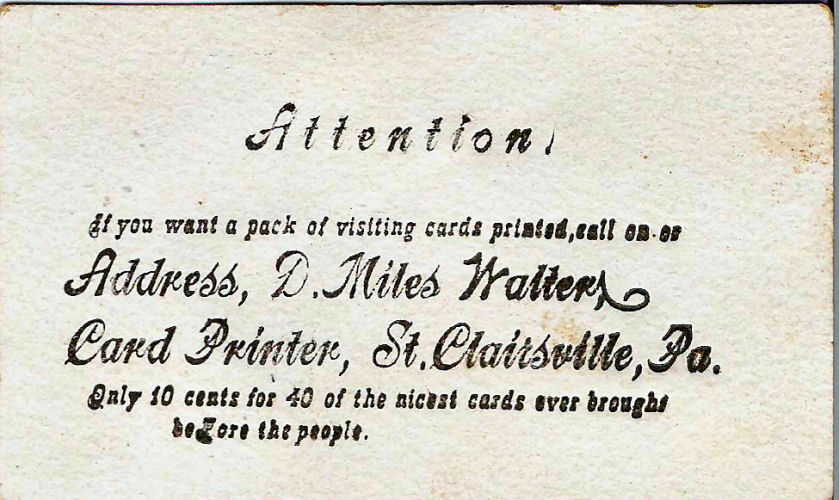

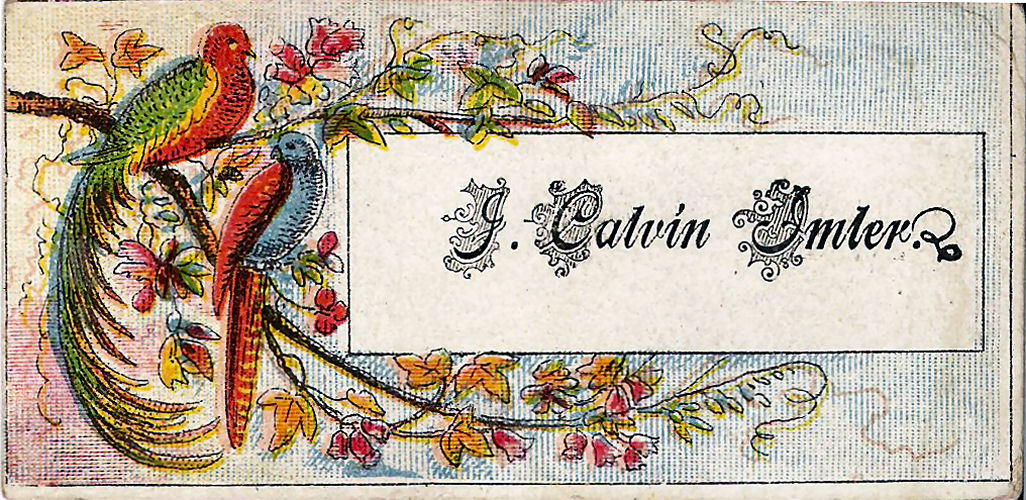
| The cards exhibited on this page are decorated cards. In addition to the name printed in black on the white card stock, additional design elements are employed as embellishments. The cards which are exhibited directly below include floral sprays, in which birds might be perched, in addition to the printed name. The additional elements tended to be printed by means of offset lithography resulting in bright, vivid colors. In some cases, though, the multiple passes of the lithographic press cause the layers of color to be slightly off register. Notice that the first two cards in this set bear the same floral image. Like a dress, it would be hoped that the two ladies, Mary Flory and Sarah Ebersole, would not present their cards at the same event. |
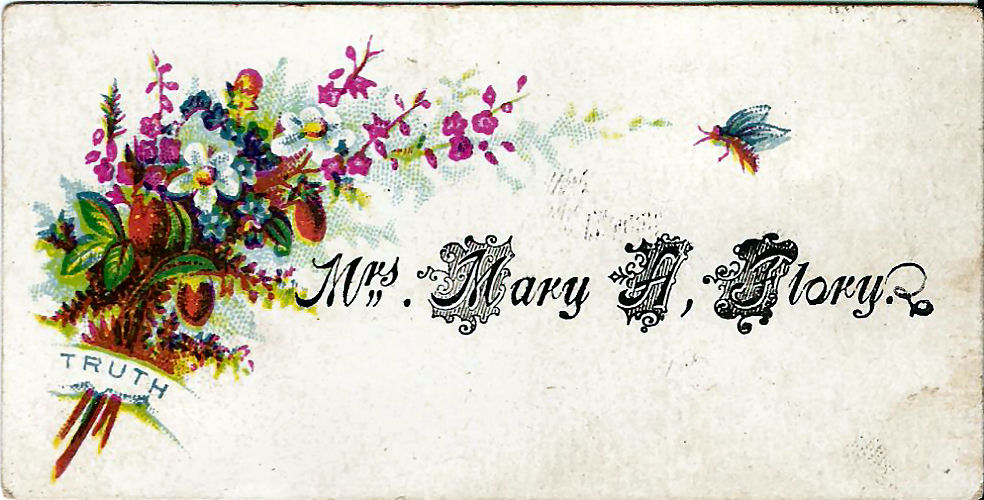
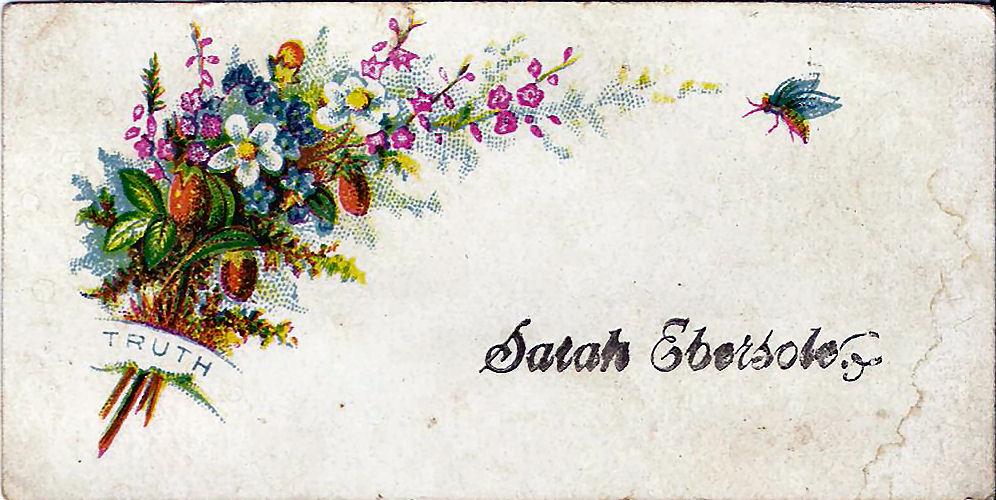
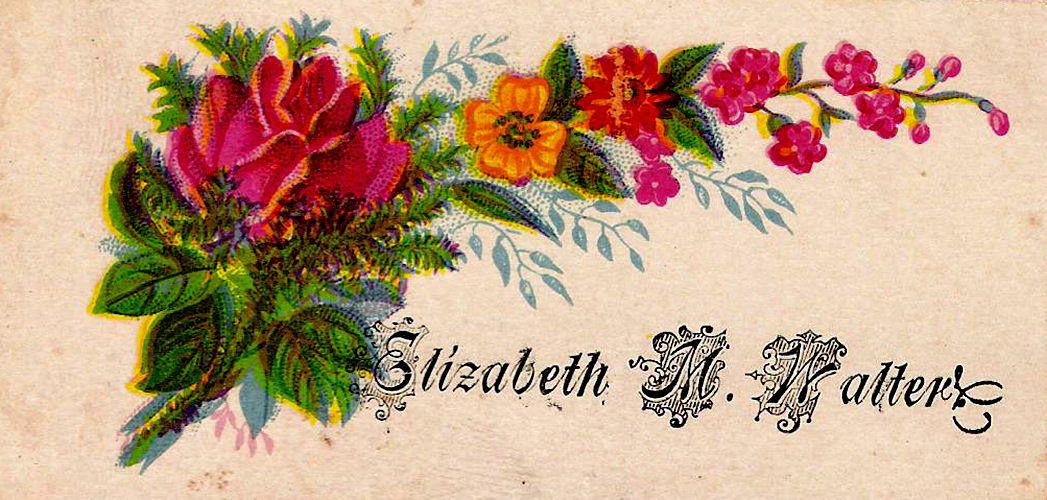
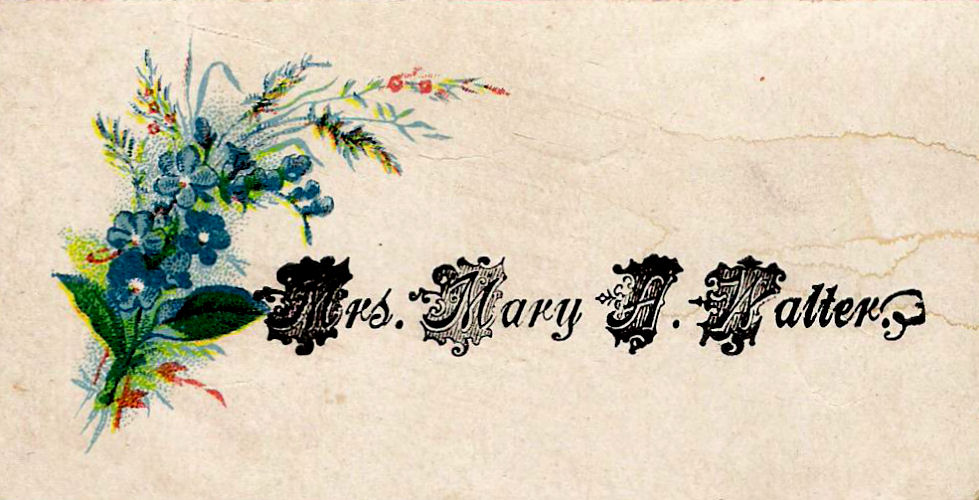
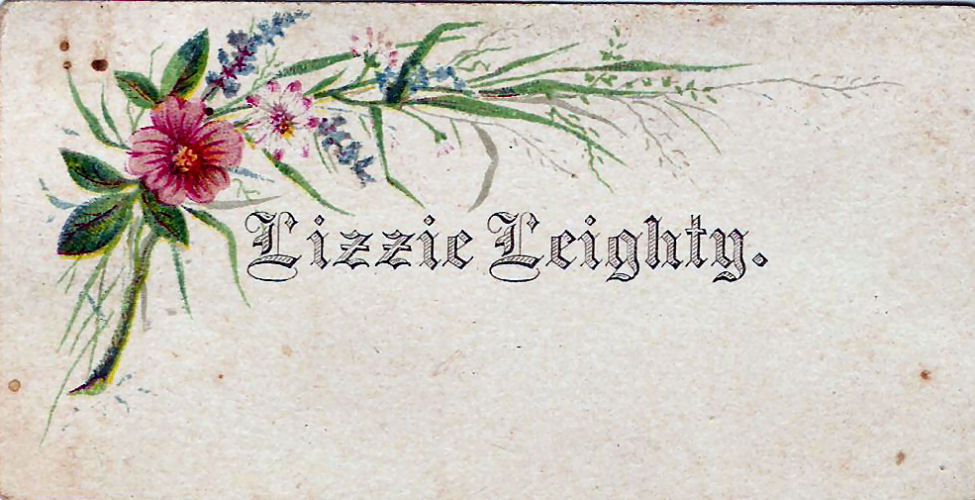
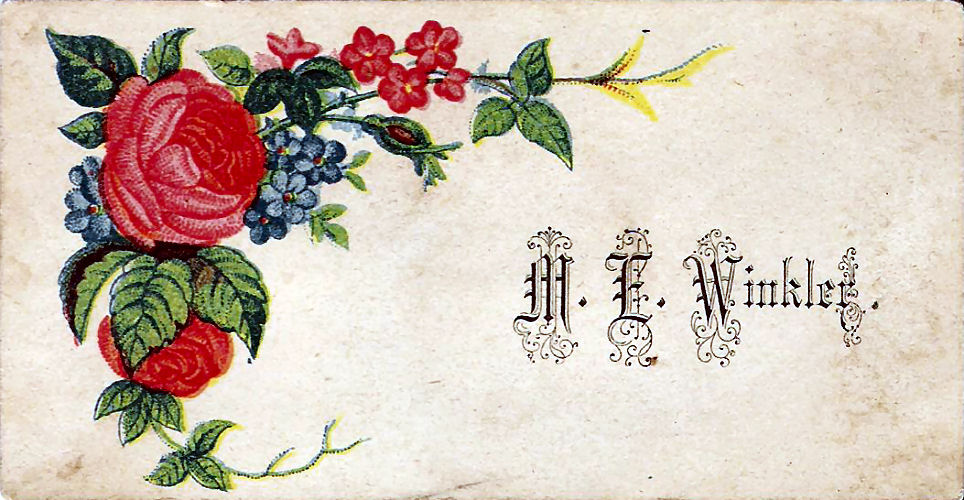
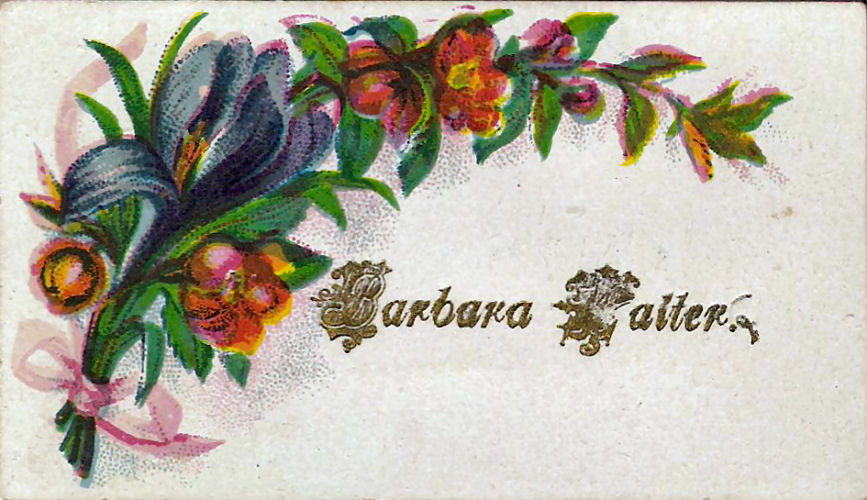
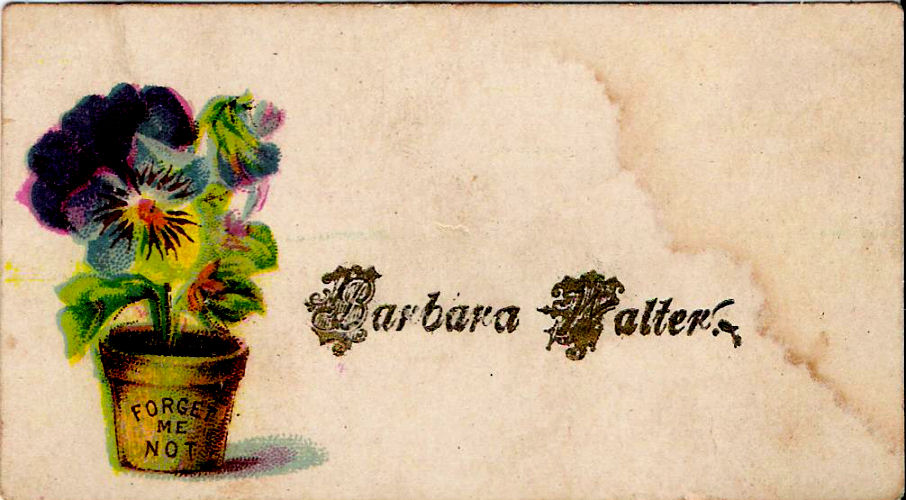
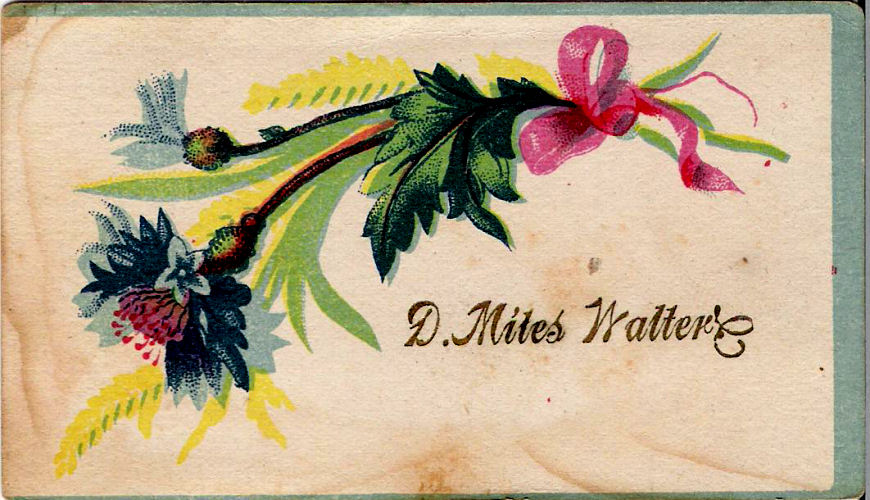
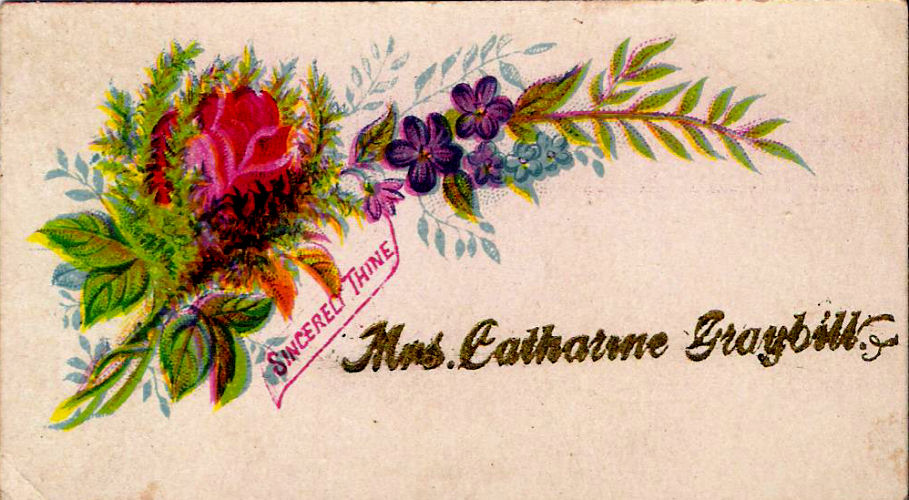
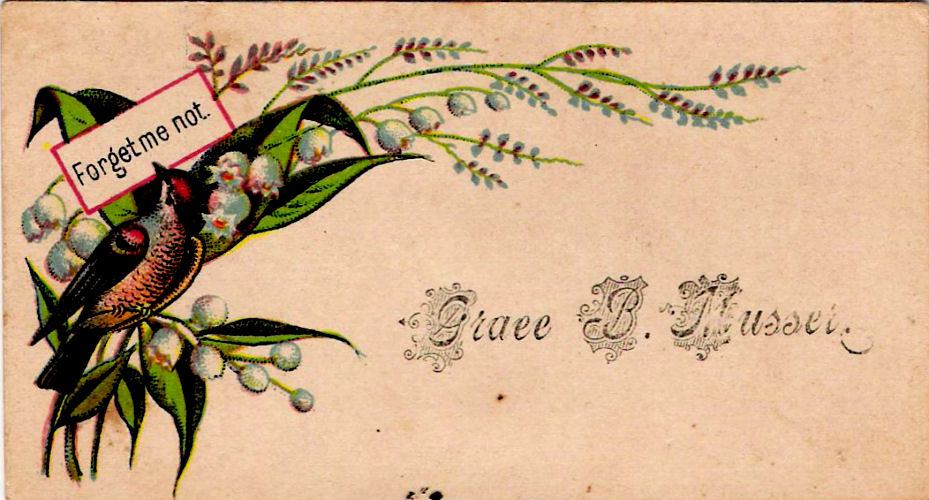
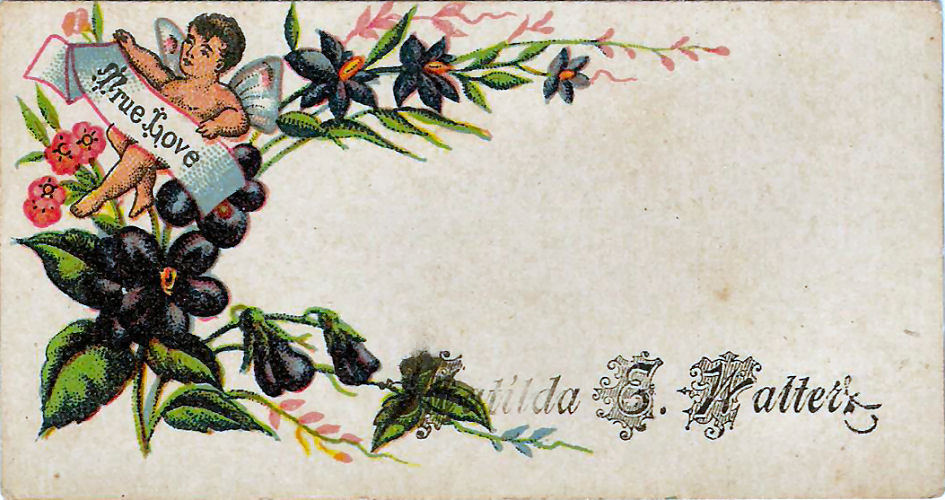
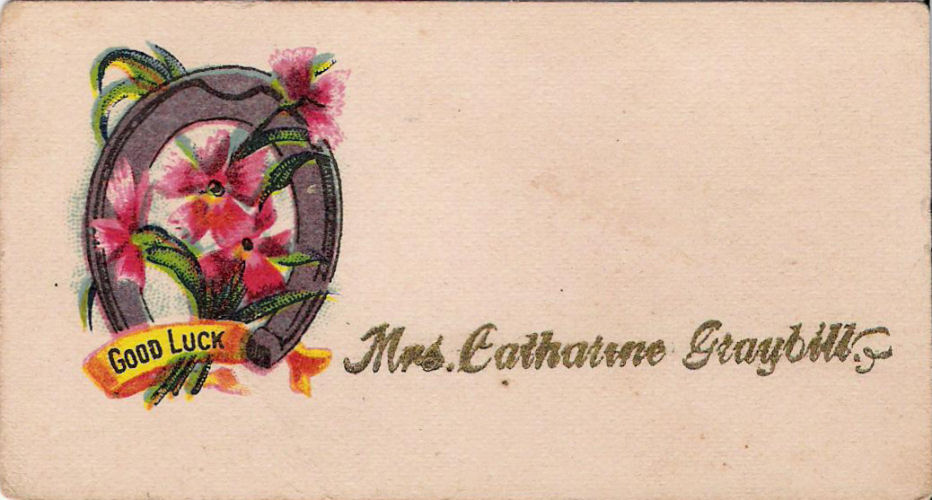
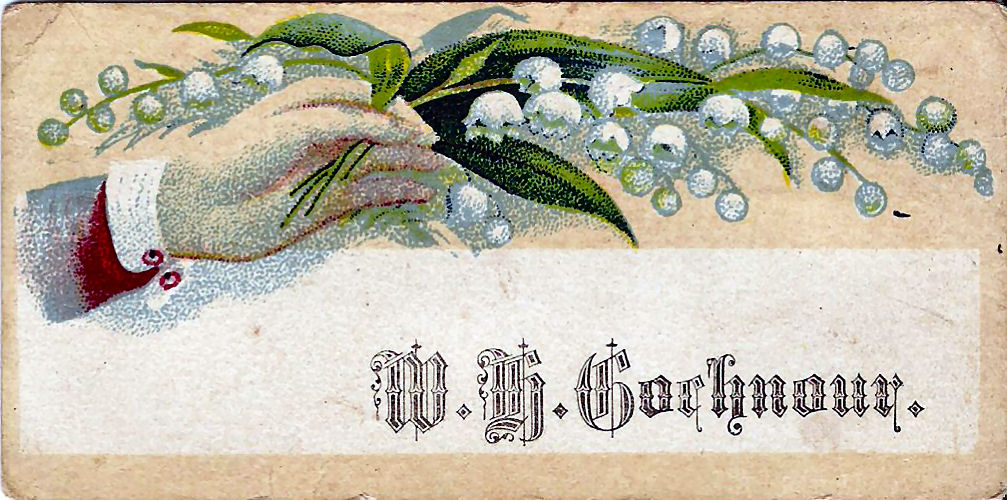
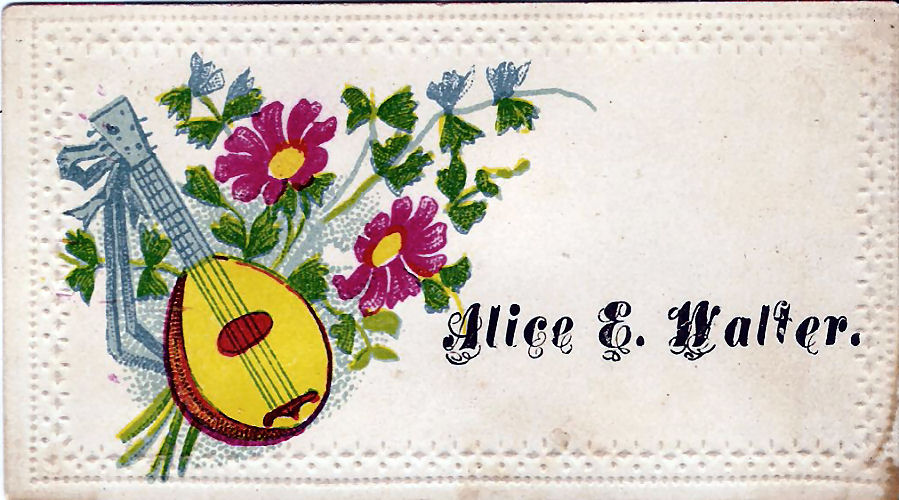
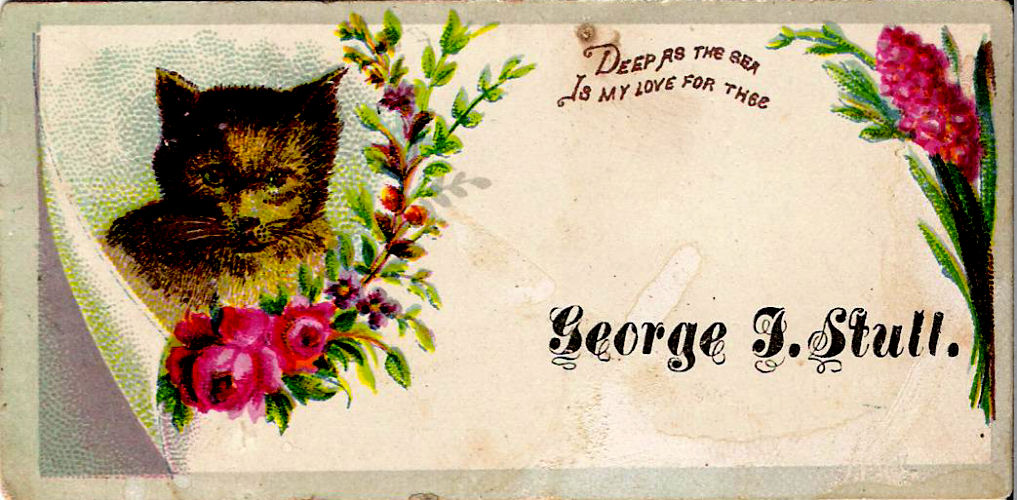
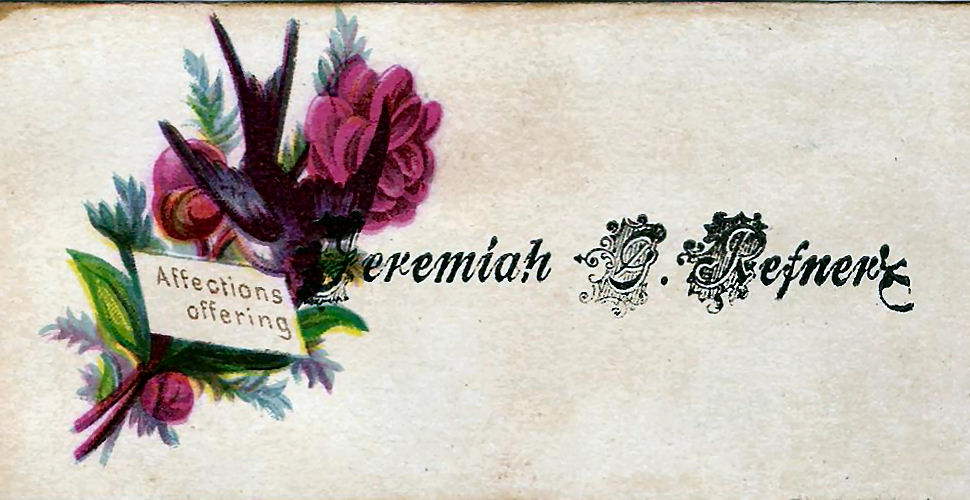
| The following collection of cards include non-floral images situated, primarily, in the top, left corner of the card. |
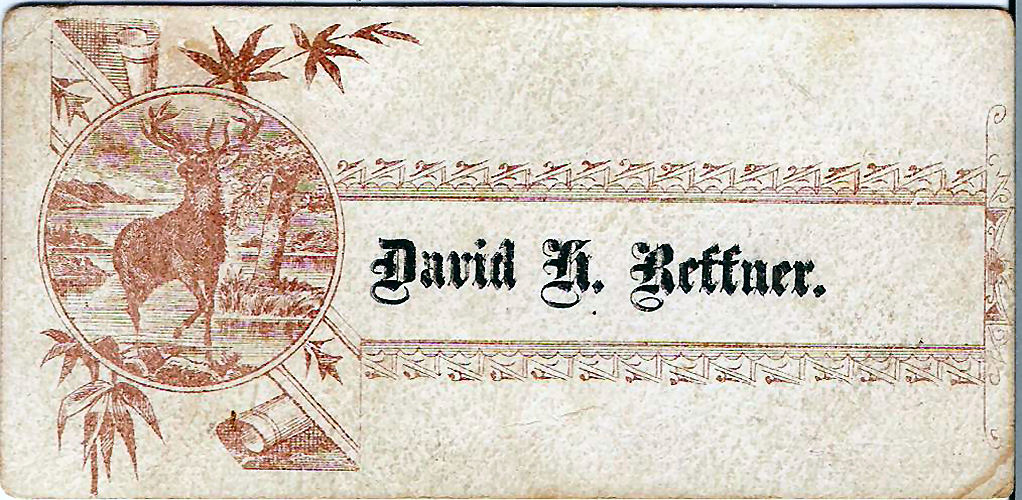
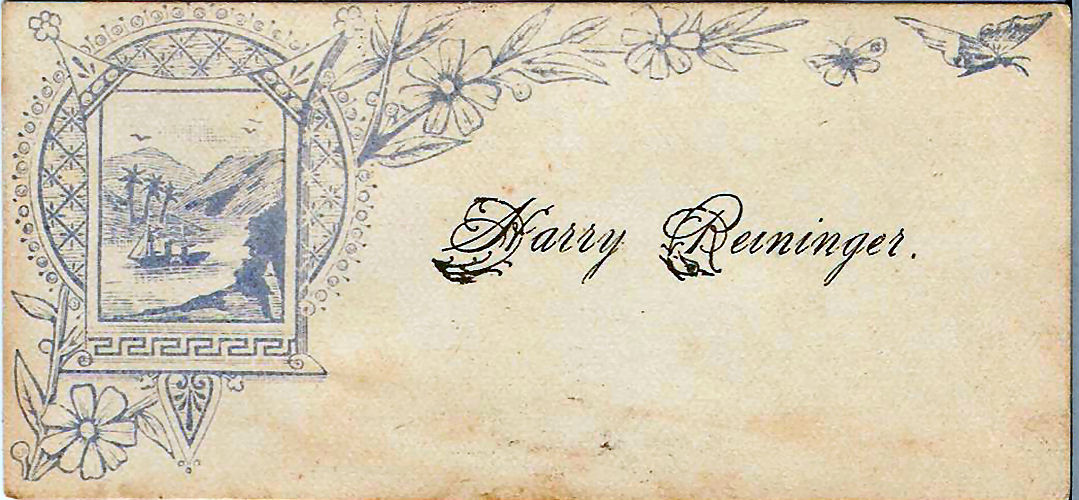
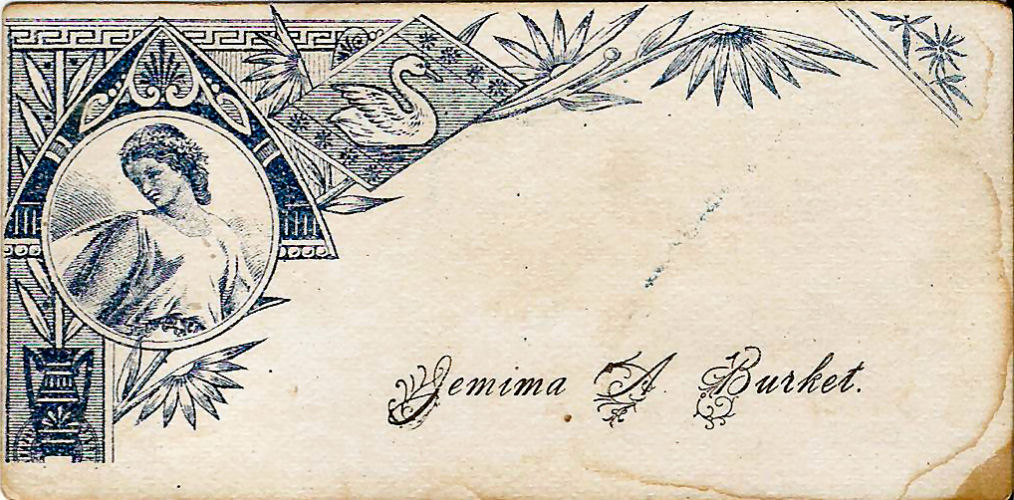
| The following collection of cards include images that fill the card, with the name confined in a small rectangular space. |
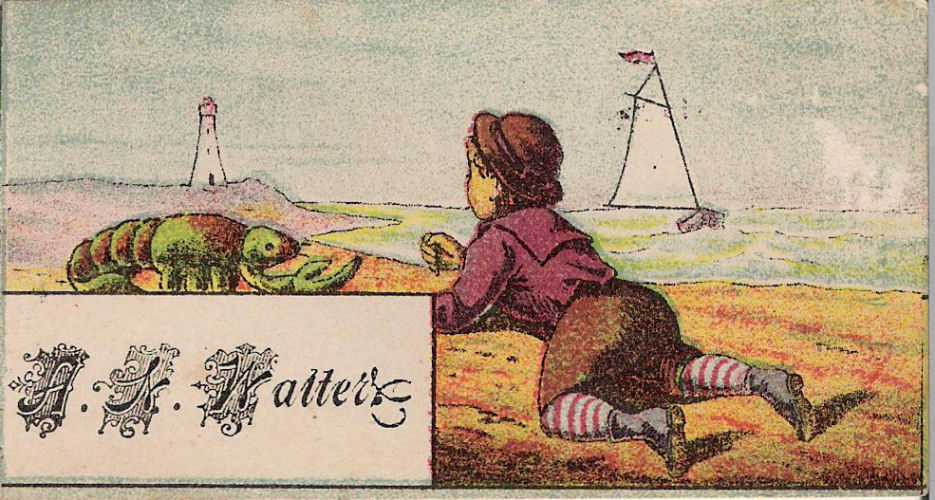
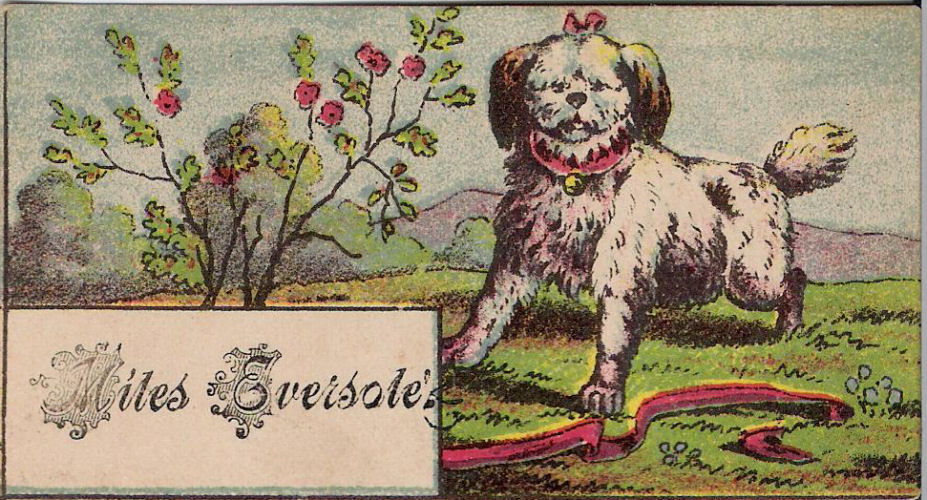
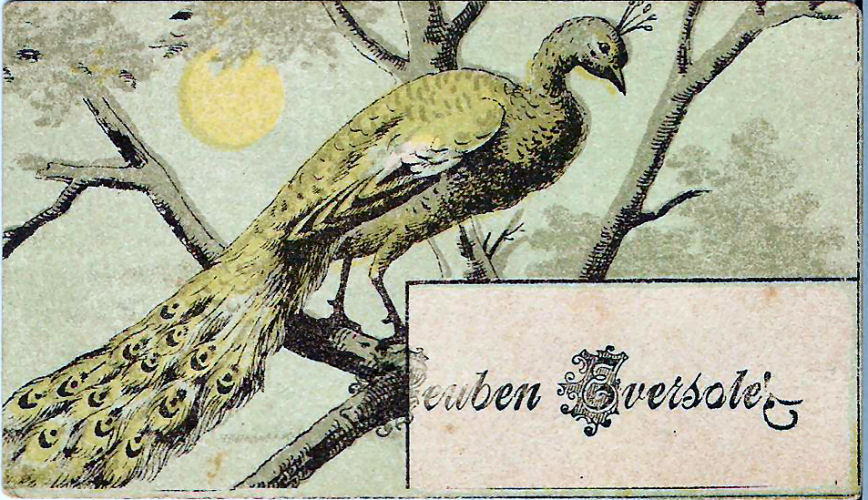
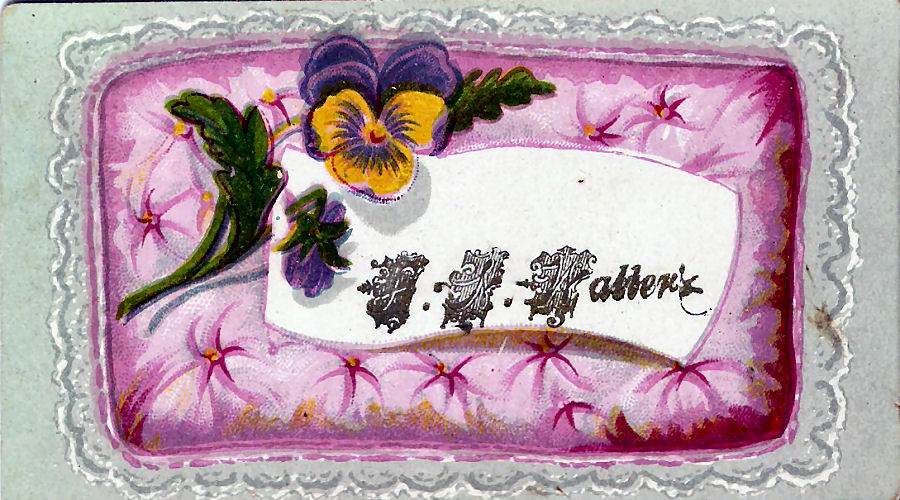
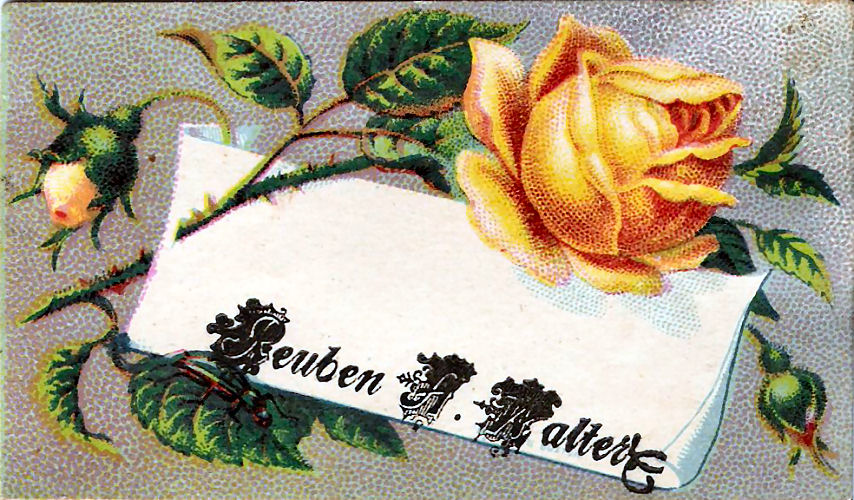
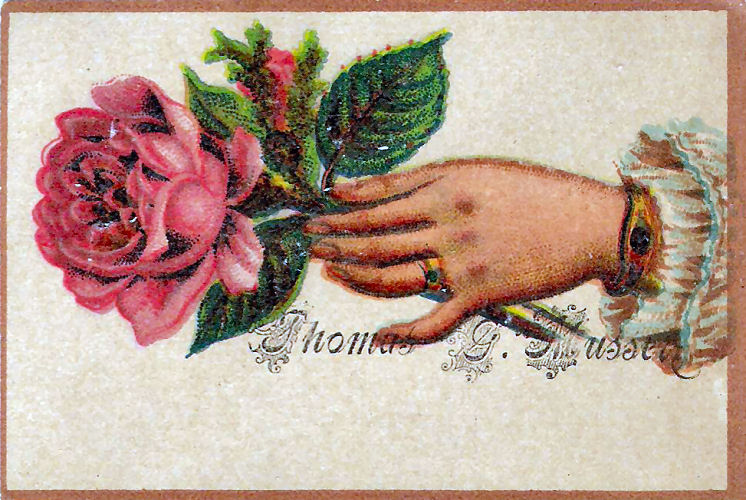
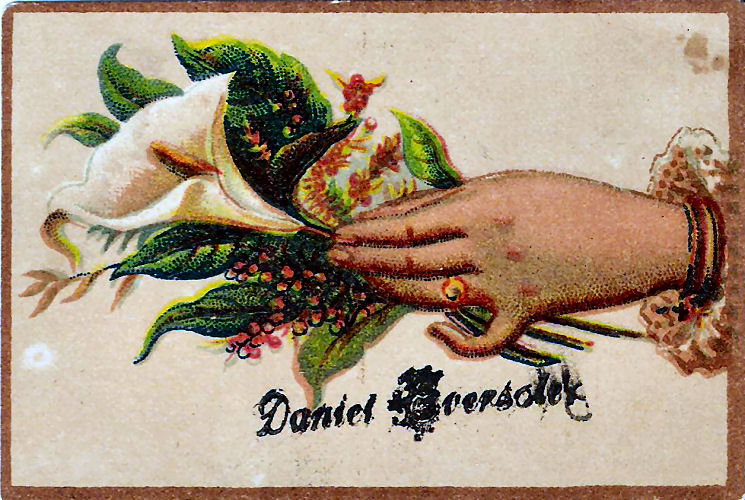
| The following card includes an image in addition to the printed name, but is unique in that it includes a poem on the front. (Sometimes, a poem or verse would be printed on the back of the card so as not to 'spoil' the front. Miss Hezekiah Cobler's card had a poem printed on the back: "When you are sailing down the river; In your little bark canoe, May you always have a qleesant [sic] time, And room enough for two.") |
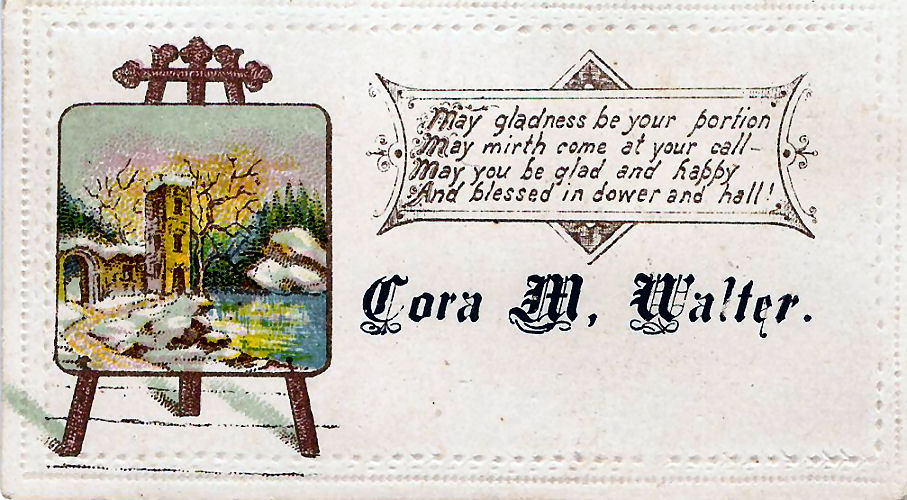
| The two cards, exhibited below, are calling cards possessed by Hezekiah Cobler of Bedford County. Miss Cobler used not only a card with her name simply printed on the card, but also one that had a female's likeness ~ possibly of herself ~ along with a fancy border design. |
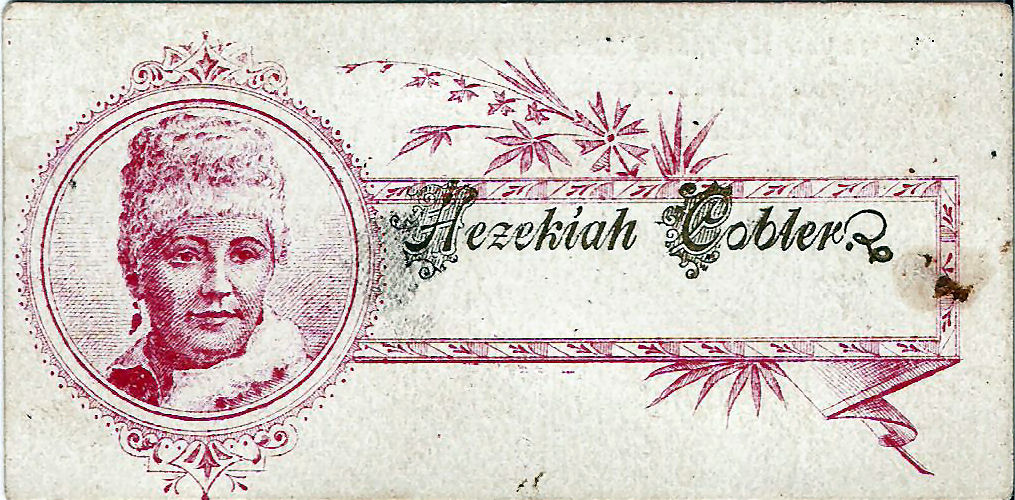
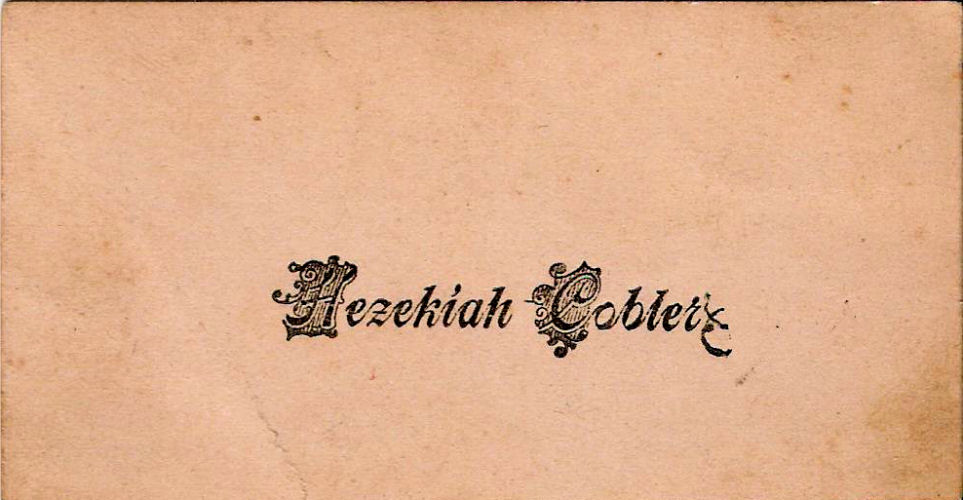
| Mr. and Mrs. J. Thompston possessed and used two slightly different cards, as exhibited below. Whether they used them concurrently is not known at this time. The fact that both cards employ the same font for the printed name suggests that both cards were printed at the same time, and therefore probably were used at the same time. It is possible that Mr. Thompston used one of the cards and his wife the other. |
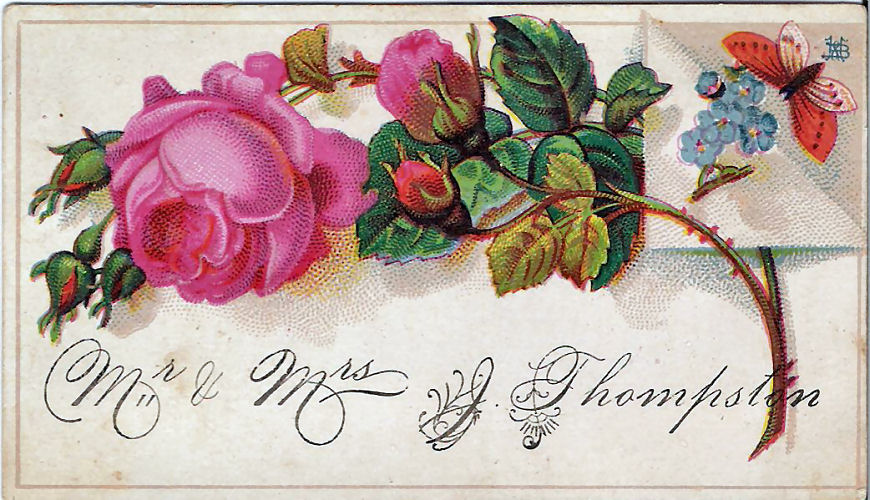
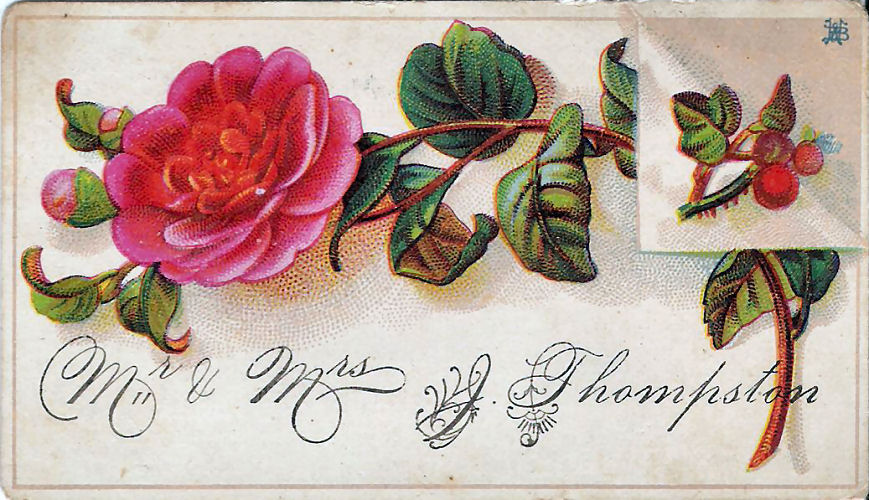
| The last card, exhibited below, is actually a business card. It is a card presented by D. Miles Walter, a printer who's print shop was located in the town of St. Clairsville, Pennsylvania (in northern Bedford County). Note that, with great modesty, Mr. Walter states that for only 10 cents, he would supply the customer with forty "of the nicest cards ever brought before the people". |
